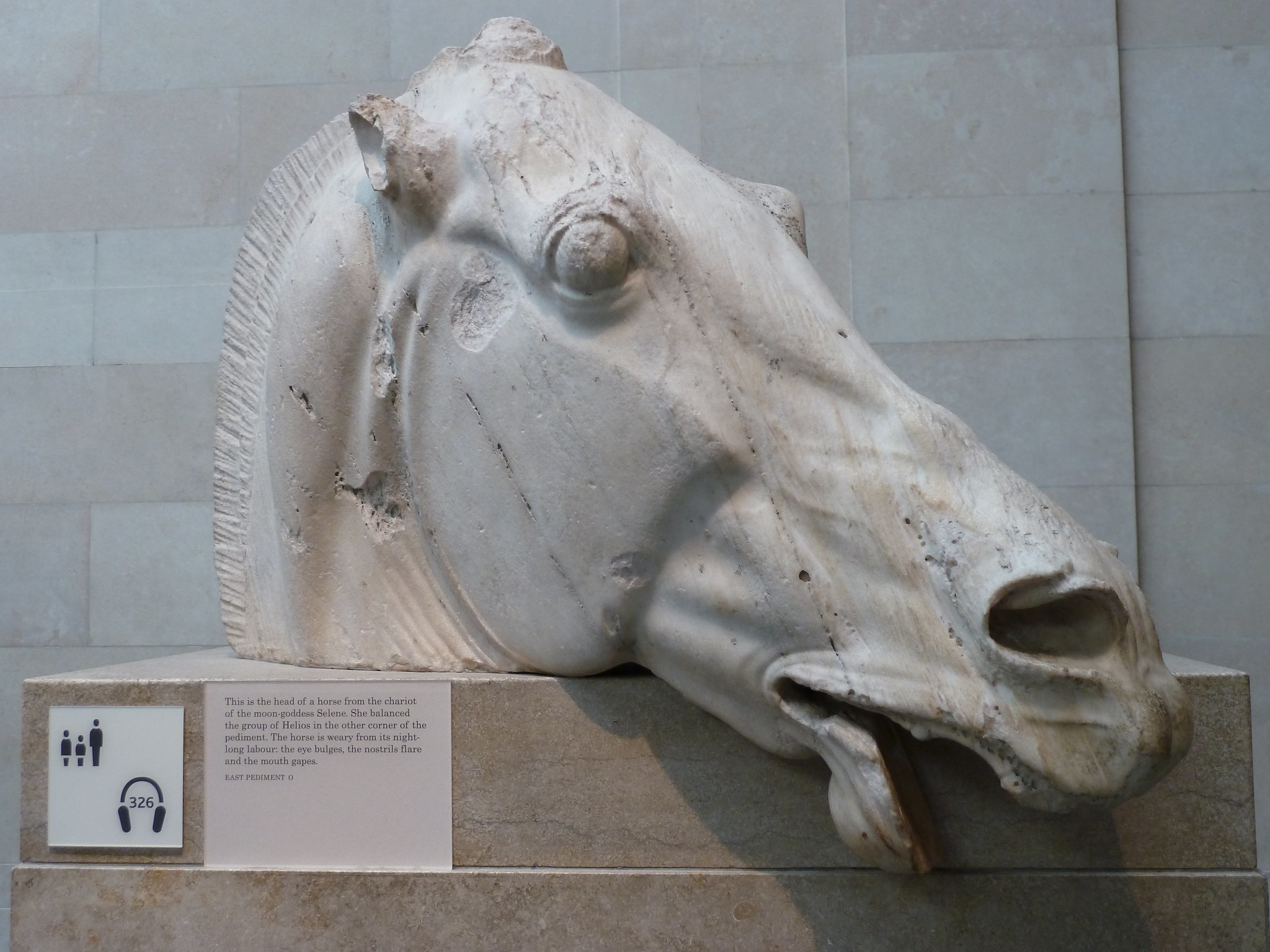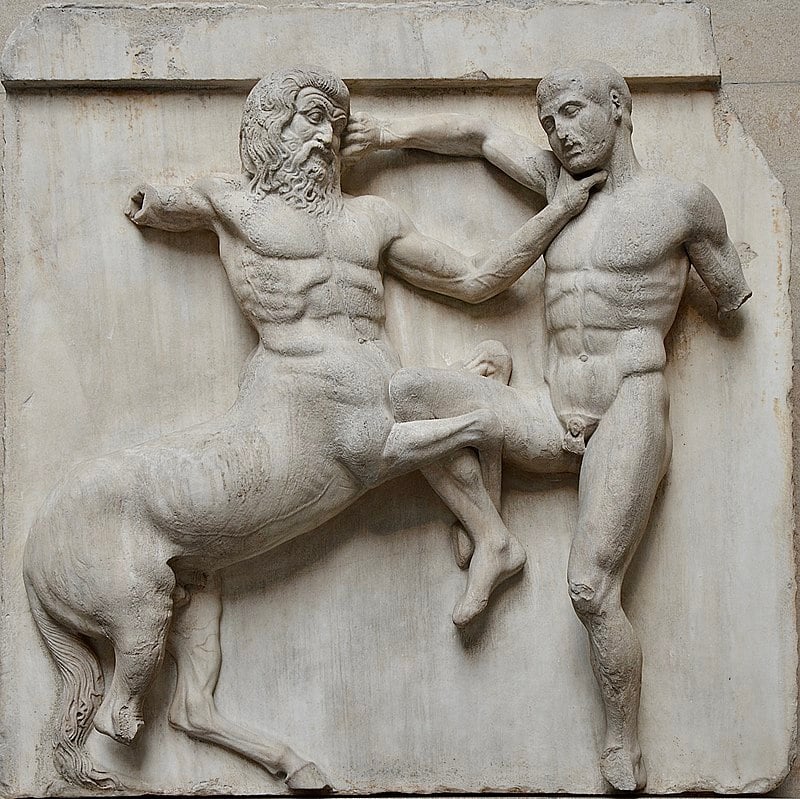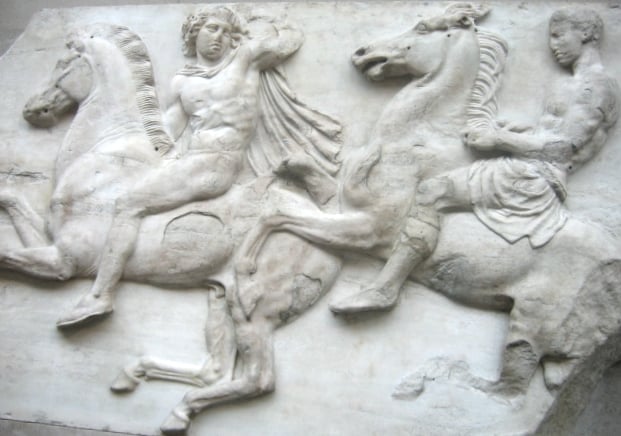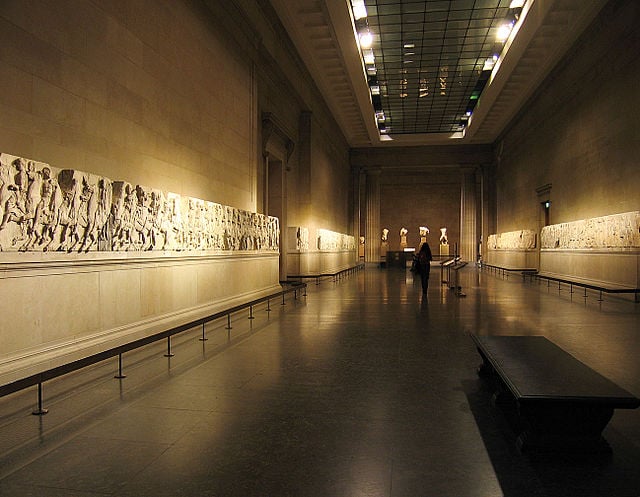
The first perfect replica of a Parthenon sculpture was presented at the Freud Museum in London on Tuesday by the Institute for Digital Archaeology (IDA). What makes the replica of the sculpture fascinating is that it is carved from the same Greek marble (Pentelic) used for the original 2,500 years ago.
The sculpture is a Selene horse’s head, carved by robots from marble that Greece provided. It’s a perfect duplicate of one of the many sculptures held by the British Museum ever since Lord Elgin took them illegally from the Parthenon in Athens in the early 19th century.
The Oxford-based Institute for Digital Archaeology (IDA) is responsible for creating the reproduction of the Parthenon sculpture after secretly scanning the originals in the British Museum. This, however, was met with an angry response from the museum.
“The British Museum was deeply concerned to hear suggestions that unauthorized scanning took place in our galleries. Any such activity would be a breach of our visitor regulations,” a statement said earlier in March. “We regularly receive requests to scan the collection from a wide range of private organizations … and it is not possible to routinely accommodate all of these.”
Nevertheless, the IDA used Lidar cameras to produce measurements accurate to a fraction of a millimeter. The aim of its founder Roger Michel is to convince the British Museum that the original sculptures could be returned to Athens and replaced by identical copies.
Robot does 'perfect' copy of one of the Parthenon sculptures in the British Museum https://t.co/Ycf5ts8ZBQ
— Paul Lewis (@paullewismoney) November 1, 2022
Another replica of a Parthenon metope, depicting a fight between a man and a centaur was also scanned and is currently being worked on.
Growing pressure for the return of the Parthenon marbles

Pressure is growing on the British Museum over its ownership of looted objects, including the marbles. Many believe Elgin stole the marbles from Greece, which was then under Ottoman occupation.
Michel revealed that he had recently discussed the matter for the return of the Parthenon marbles, with the British Museum’s chairman of trustees, George Osborne.
The Museum has ruled out such an exchange. Yet Osborne did not rule out the possibility that the copies would somehow be exhibited at the London institution. He spoke of a potential “deal to be done where we can tell both stories in Athens and in London”.
Talking about the artefacts of the British Museum taken from other countries, Michel said this week: “It is a moral case and there is no question they are going to have to give back the Benin Bronzes, the Cambodian sculptures. When you steal stuff and put it on public display, don’t be surprised if sooner or later someone comes along and says: ‘You stole that from me and I want it back’.
“There is a low tolerance now for cultural appropriation and the British Museum is behind the times. And besides, these things were like amazing grapes for the British; they have squeezed all the wine and got as much Greek culture infused in British culture as it can hold.”
Replicas will accurately depict the marbles

Michel conducted the scanning with Alexy Karenowska, the IDA’s director of technology.
He mentioned that two other replicas of the sculptures which have been carved by a robot from a different piece of marble will be painted with the vivid colors, such as brown skin tones, that Phidias used for the originals.
He highlighted as well that the British Museum‘s “pure white” marbles were misleading and believes the creation of replicas could help resolve this matter.
“Reconstruction could restore the colored surfaces of the originals – including a range of skin tones,” he said.
Painted replicas and virtual reality can “really show how antiquity looked”, he added.
“It could end up with a collection of really exciting objects to tell the kind of story they are claiming to tell already but aren’t,” Michel added.
The display of the replica at the Freud Museum was accompanied by an augmented reality display of the original horse’s head at the British Museum.
Greek government cautious about the project
In addition, a 3D model of the Duveen Gallery that houses the marbles has been created. The model will digitally house the masterpieces of classical Greece that could replace the Parthenon Sculptures with periodic exhibitions, if they are ever returned to the Acropolis Museum.

Michel mentioned that there is a big concern from the Greek government over the institute’s project. “They just want the objects back,” Michel said, adding that he had come into direct contact with the Greek Ministry of Culture and Sports.
“They love how this project has captured the imagination, but they fear that the objects are so good that the British Museum is going to turn round and say: ‘Yeah, these things are perfect. They are made of Pentelic marble. You keep them.’ That is their big concern.”
Parthenon marbles illegally taken by Great Britain
The Parthenon marbles, regarded as the high point of classical art, have been in the British Museum’s possession since 1816. The artefacts were removed at the behest of Lord Elgin, the British ambassador to the Ottoman empire, which occupied Greece at the time.
Greek governments have argued that the antiquities were illegally taken from the temple at a time when Greece was a subject nation without sovereignty. However, the British Museum insists that the marbles were legally acquired.
Greek PM Kyriakos Mitsotakis put forward last year that the marbles were “stolen” by Lord Elgin. Appealing to Boris Johnson’s background as a classicist, Mitsotakis told to the former British PM that he was “a true philhellene” while insisting the Greek government did not consider the marbles question to be a “footnote” that could be forgotten or overlooked.
Nevertheless, Johnson responded that any decision on returning them must be made by the British Museum.
“The Prime Minister said that he understood the strength of feeling of the Greek people on this issue, but reiterated the UK’s longstanding position that this matter is one for the trustees of the British Museum,” a Downing Street spokesperson said.
See all the latest news from Greece and the world at Greekreporter.com. Contact our newsroom to report an update or send your story, photos and videos. Follow GR on Google News and subscribe here to our daily email!



